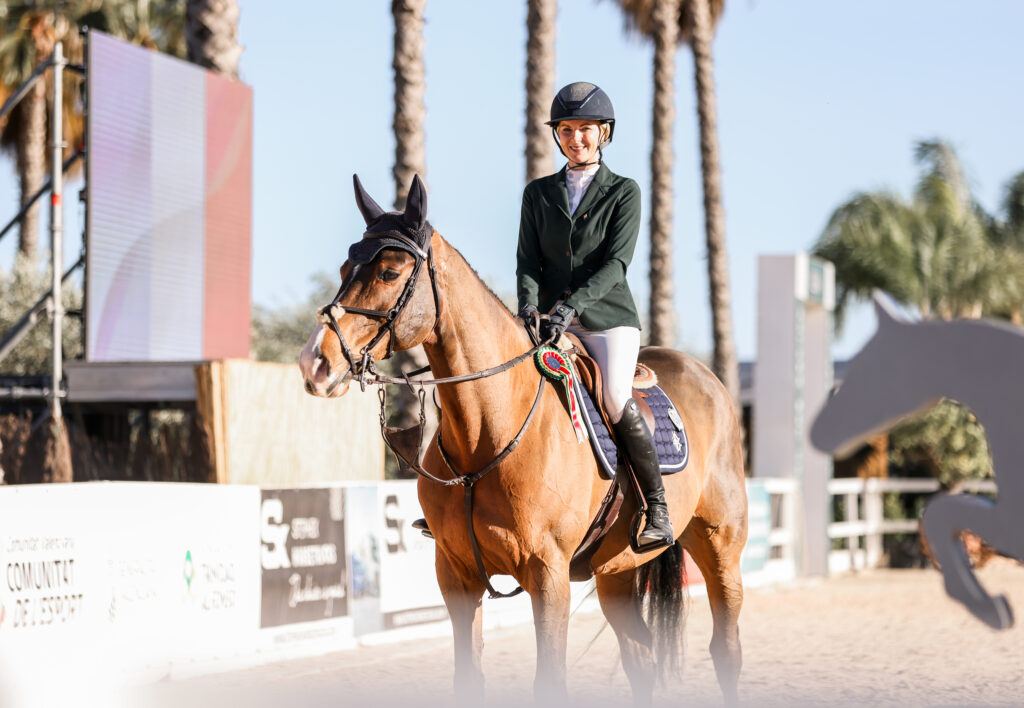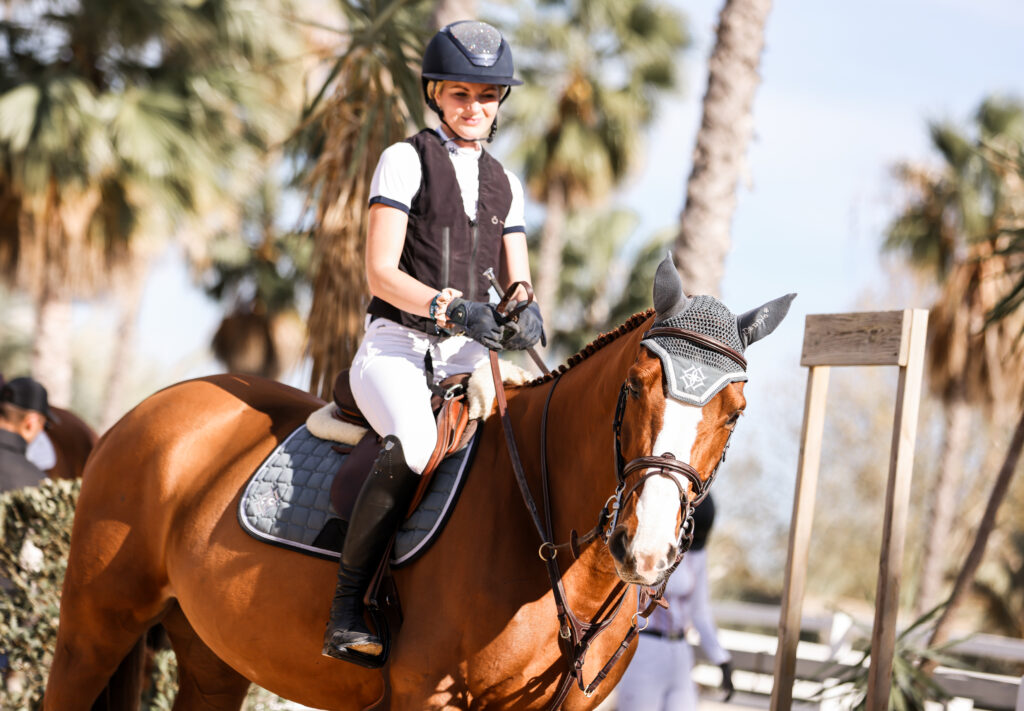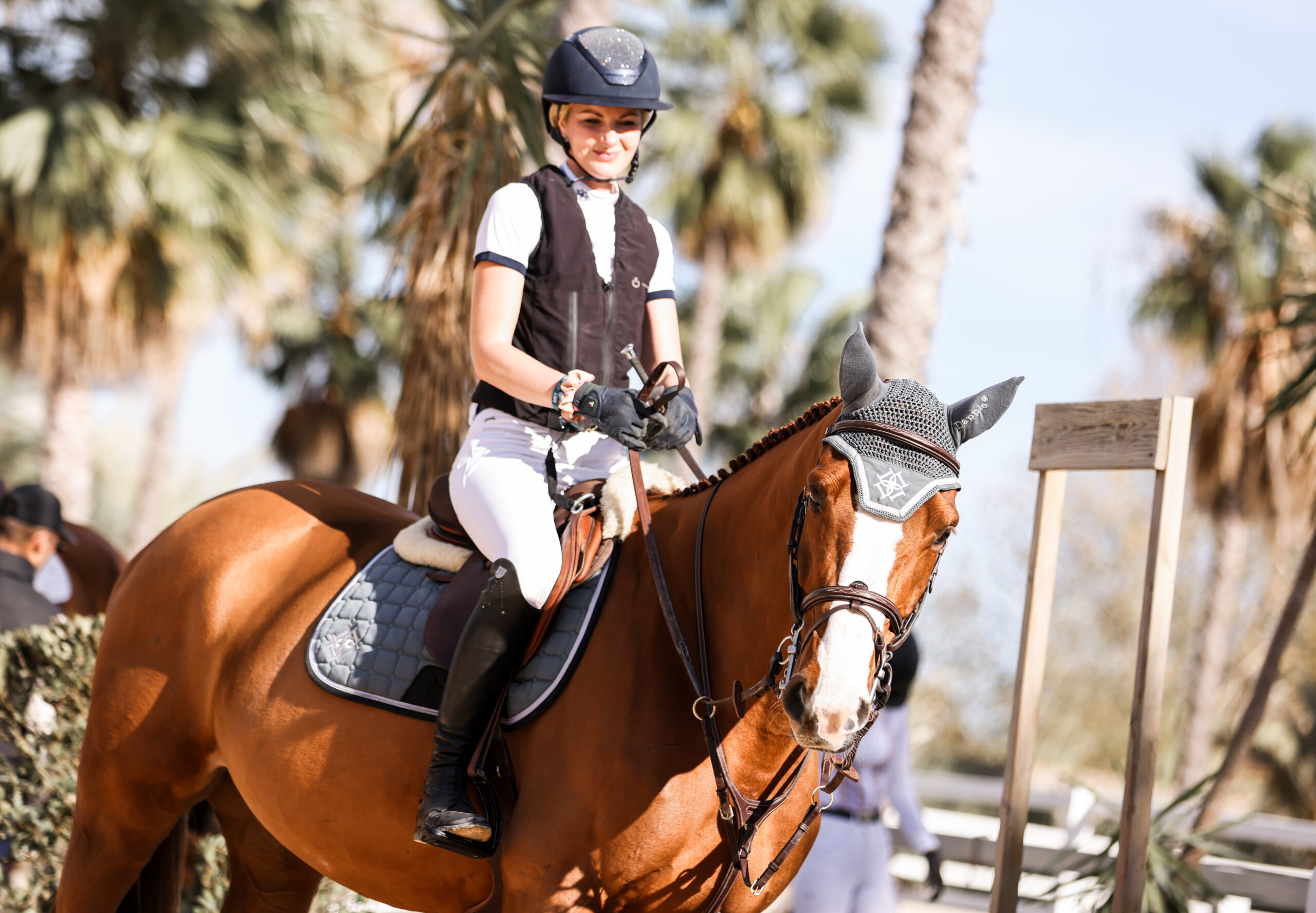I get asked so often about travelling the horses to Spain (and dogs!), so I thought I’d just a few helpful tips to get you started with your travel plans, and how to go about travelling animals.
First of all, you need to decide which show you would like to do, how many horses you’re bringing, and if you’re bringing your own lorry or using a transporter.
For the purposes of this example, I’m going to assume you’re traveling from Ireland, bringing your own truck with three horses, one dog, and you’re going to the Mediterranean Equestrian Tour, otherwise known as Oliva. (If this isn’t your plan, it should be! This show is always a great experience for a variety of levels).
If you haven’t made the trip before I would highly recommend getting a horse transport company or equine shipping agent involved as they can really help to take a lot of admin off your hands. This includes planning the routes and booking stables that are easy to access along the way – all important things to consider.
Step 1:
Contact the show well in advance to check availability, you can then make your entries and book your stables for the relevant number of horses.
Step 2:
Make your declarations to your Federation.
Step 3:
Engage a reputable equine shipping agent, give them the dates of the show and ask them to plan your route and book your stop-over stables.
If you were planning on travelling with the horses and are staying in the truck then you don’t need to worry about getting accommodation for yourself. However, if this is not the case, ask them to make recommendations for where to stay on site or nearby throughout the trip.
Step 4:
When they have provided this you can then map out your route, your stops to re-fuel & water the horses, etc.
Double check postcodes to make sure they are bringing you to the exact locations of the stables. You don’t want to be driving around looking for yards when you’ve already been driving for hours!
Step 5:
Check your horses have up to date FEI passports and accreditations, that your vaccinations are up-to-date, and decide if you would like the vaccination for the herpes virus.

Step 6:
Depending on how much the equine agent is organising for you, you may need to organise your local vet to do the health papers for the horses 24 hours before travel. Someone from the Dept vet will also need to make a visit.
Following this, you will also need to book your ferry. If, in this case, you were travelling from Dublin to Cherbourg, Irish Ferries is the best option, and you will need to book through Freight. This is a 15 hour sailing trip, so ensure there is plenty of ventilation while they travel and don’t over-rug them!
Step 7:
If you are travelling separately to the truck, don’t forget to book your flights. Depending on your situation, you may also need to book accommodation and car rental.
If you need accommodation, the options for finding somewhere nearby can be found on show advisor, contacting the show, checking out booking.com or Airbnb for options. In this scenario, I fly into Alicante and collect my car rental from there.
Step 8:
Check if your dogs passport is up-to-date with vaccinations, especially rabies vaccine. If needed get in touch with your vet and get these done well prior to travelling.
It is important to note – you will need your dog’s passport stamped within 24 hours of travel on your return from France too, so be sure they’ve had the appropriate treatment for worms and ticks.
If bringing a dog, don’t forget to pack enough dog food for them! It’s amazing how much you will get through on these trips… There is also the bowls, beds, leads, toys, poo bags – the list is endless! Think about what you use for them at home day-to-day.
Step 8:
Decide how much feed you will need to bring for your trip!
I like to bring the feed that the horses are used to, and I will also fit in as much hay as possible as I can guarantee the quality and I don’t want to be stuck without any in case the horses need more at stopovers.
Stock the truck with easy to prepare food for the journey, whether it’s for yourself or the driver and your groom.
Make sure you leave water drums, collapsible buckets, and the necessary feed for the trip within easy access in the truck. Mash is a popular feed to give while horses are being transported as it helps to ensure they are taking in plenty of fluids. It’s also important that the horses get to lower their heads at rest stops and have a good stretch!
Have salt licks for the horses can be a useful addition, especially if travelling to warmer climates where they will be sweating more than at home.
Extra top tips:
- Have cash or some form of payment ready for diesel and tolls. Usually the stopover stables only take payment in cash, so have it ready for your groom or driver if you are not travelling together.
- Plan ahead to get to the show with plenty of time for the horses to rest before the trot up!
- With everything going on, don’t forget to fill in your horse’s temperature checks on the FEI app and submit your declarations for the first day of the show!
- Make sure you have number holders easily accessible with you to use for the trot up, as well as a bridle and chain.
- Make sure you have the correct adaptors for your lorry electric hook up for the relevant country – the last thing you want is to arrive at the show and not be able to plug in!
- Bring a bike or scooter for ease and speed of getting around at the show, those steps really add up when you’re running back from walking a course…


